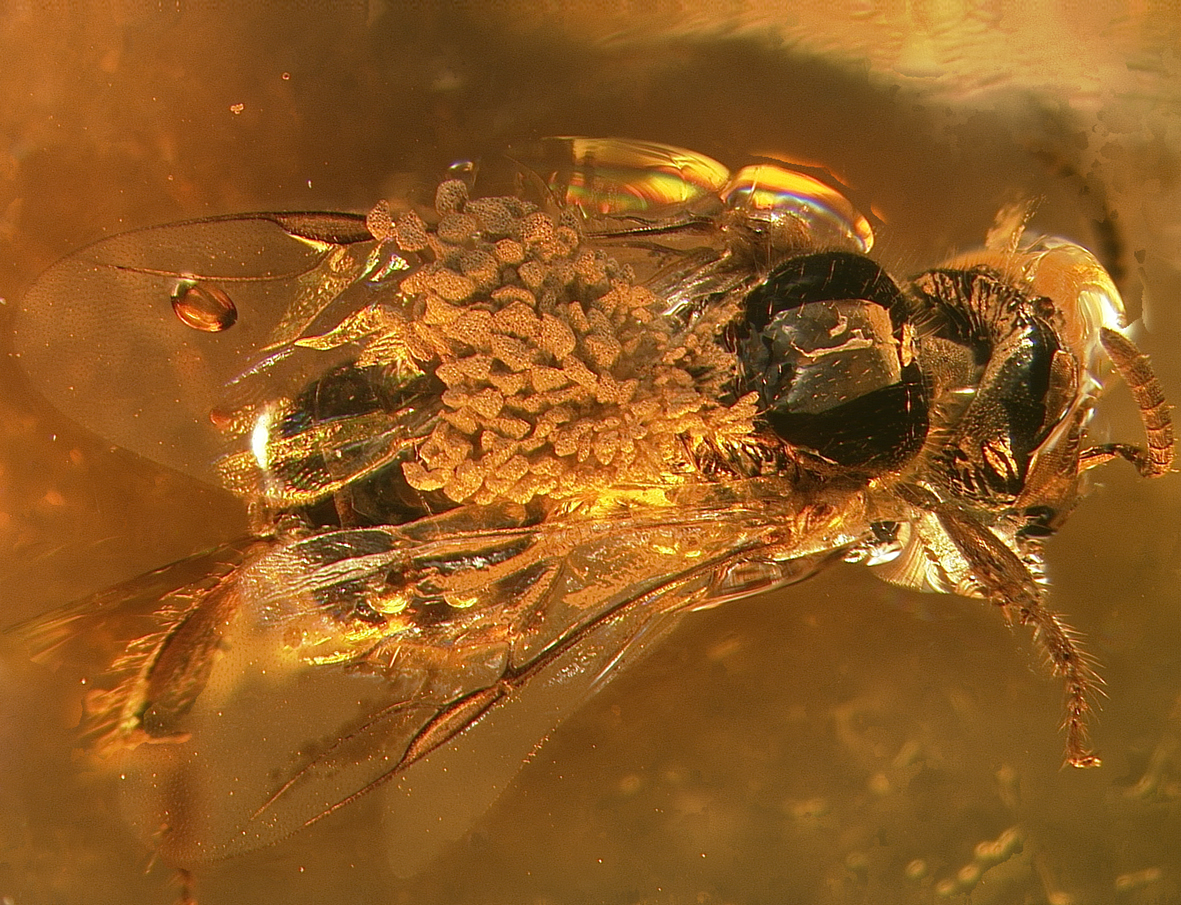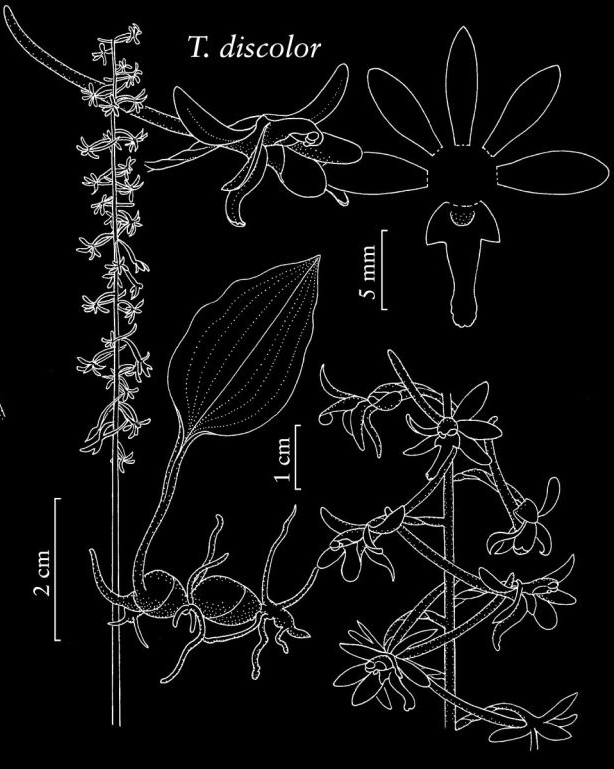Crippled Cranefly Orchid (Tipularia discolor). Recorded on August 9th 2014, Georgia State Botanical Garden, Athens, GA, USA.
The genus Tipularia has three species. Crippled cranefly orchid (Tipularia discolor) is the only species found in North America. The other two species are Asian found in the Himalayas and Japan.
Tipularia discolor grows in organic humus-rich soils of closed canopy oak-pine forests in the Eastern United States. It is protected as Threatened, Endangered, or Rare in Florida, Massachusetts, Michigan, New York, Pennsylvania.
Each plant produces a single inflorescence between June through September. Curiously, the plant blooms earlier in the northern part of its range. Inflorescence can bear up to 55 small green, greenish yellow, or greenish purple blossoms resembling a group of crane flies hovering which gives the genus it’s name Tipularia. The Crane Fly insect genus is called Tipula.
The non-showy flowers of Cranefly Orchid have a long spur coming out of the base of the petals that may be up to nearly an inch long. The spur structure has evolved exactly the same way the famous Darwin’s orchid endemic to Madagascar did. Darwin predicted in his 1862 publication that the extremely long spur must have evolved to attract an insect with an extremely long tongue (proboscis). The maturation sequence of the blossoms start from the bottom of the inflorescence. This guarantees cross-pollination. The plant is pollinated by noctuid moths and particularly by the true army worm moth (Pseudaletia unipuncta).
The inclination of flowers slightly to the right or left enables the sticky masses of pollen called “pollinaria” to attach to one of the moth’s eyes. In 2007, a 20 million year old orchid bee fossil was described by Harvard researchers carrying characteristic orchid pollinaria on it’s thorax. The fossil demonstrated that the Orchid family is not a recently evolved group and it’s pollination with insects was much older than hypothesized earlier:
The leaf of Tipularia discolor is green or green with purple tints on top. The underside of the leaf is purple. The leaf emerges from the corm in the autumn after the plant has bloomed, and persists through the winter. It will disapear until the new year’s inflorescence appears. Each plant has a single leaf. For this reason it was formerly named as Tipularia unifolia because of it’s single leaf, but it is no longer used.
Note that the survival strategy of this orchid is rather adventurous and risky. The entire inflorescence is produced from the biomass stored in the corm from previous year’s photosynthesis through a leaf highly adapted to low light conditions. Perhaps the inflorescence itself is capable of photosynthesis. The leaf and the infloresecence is vulnerable to grazing.
USDA map of ditribution and herbarium image from Morton Herbarium at Lisli, IL. The book The Pollination Biology of North American Orchids (Vol.2) by Charles L. Argue has a detailed natural history description for this orchid.
The following was recorded in Transylvania County, North Carolina in August 13th 2013 phenologically overlapping with North Georgia. It shows the leaves (taken at a different date) and an unsuccessful attempt by a Syrphid fly to get the nectar hidden deep in the spurs of the inflorescence. Nice try Syrphid fly.
[C1291-C1303]




2 Comments